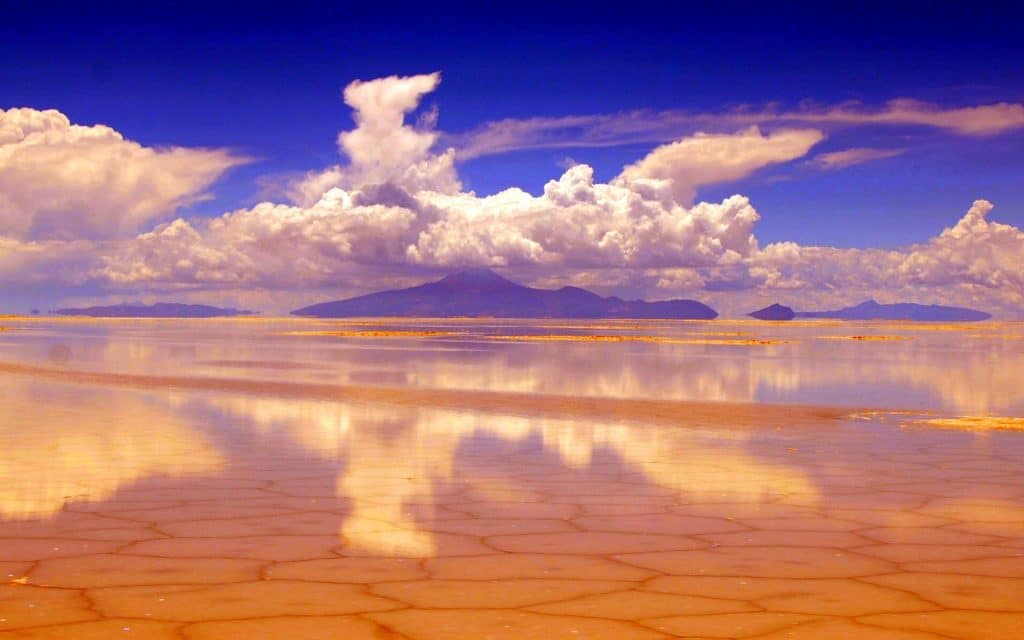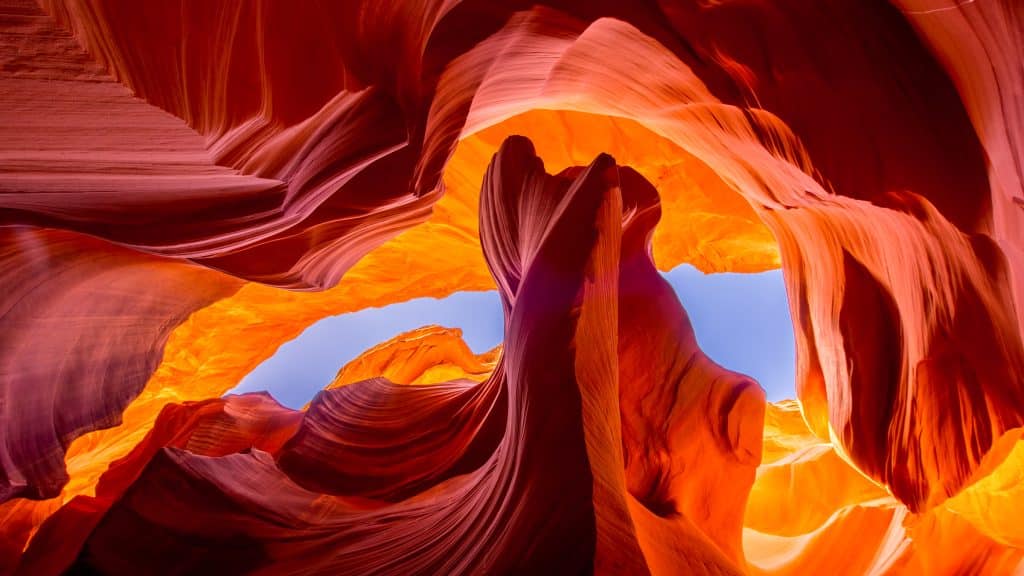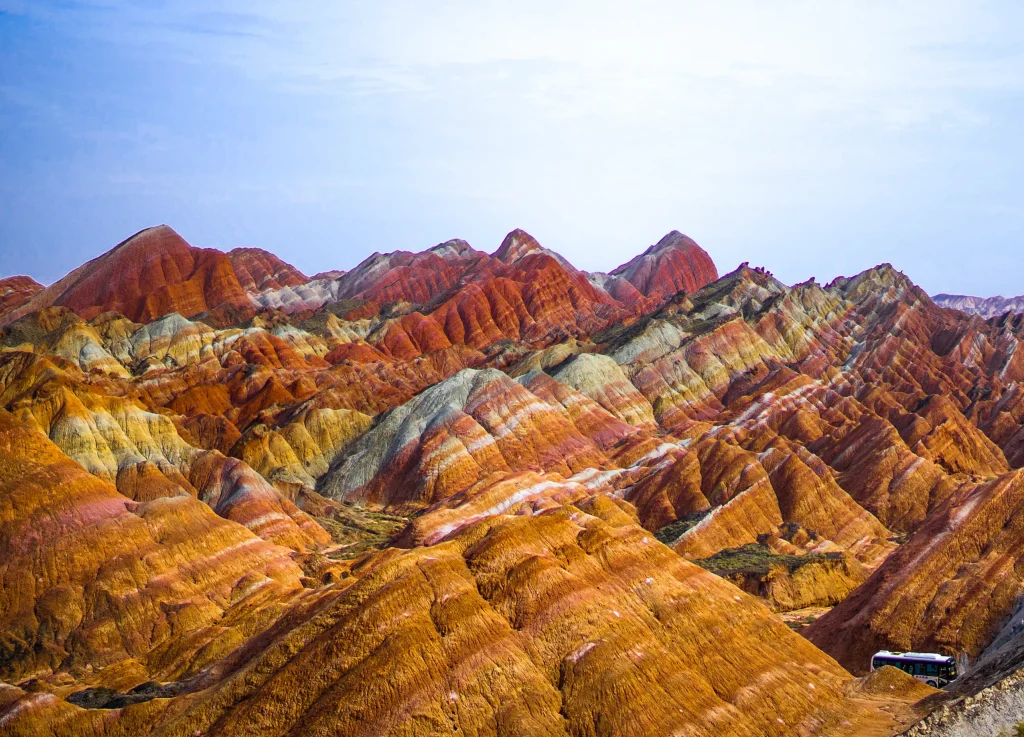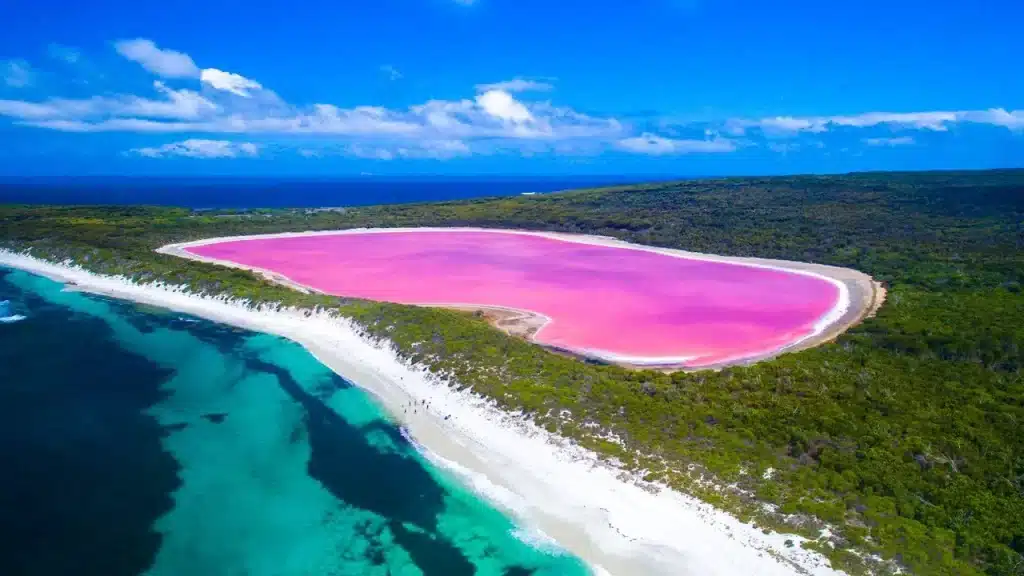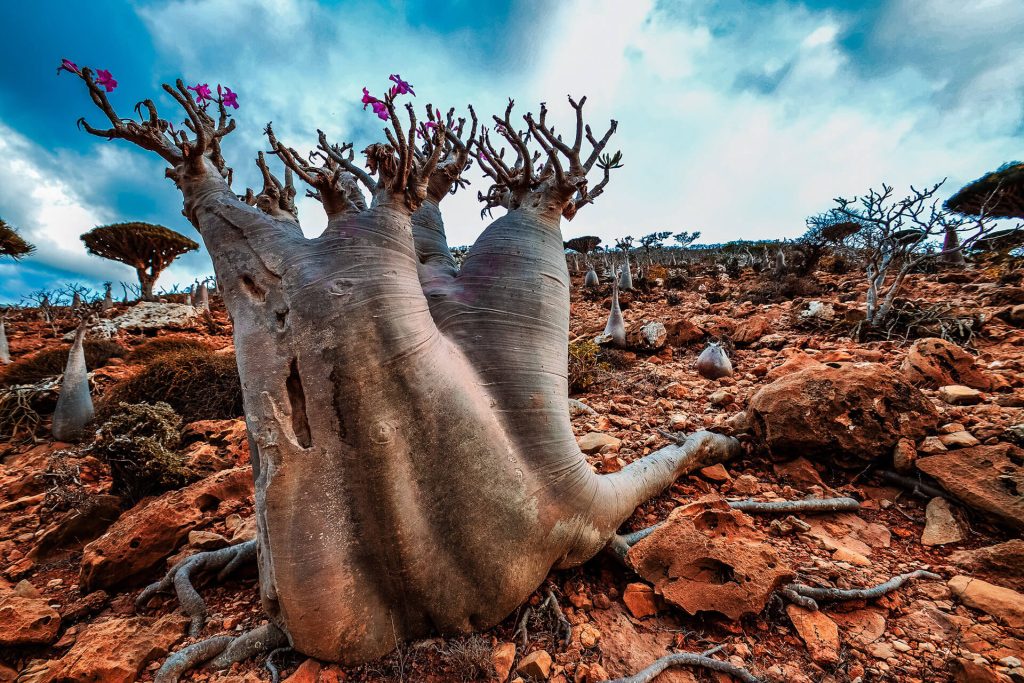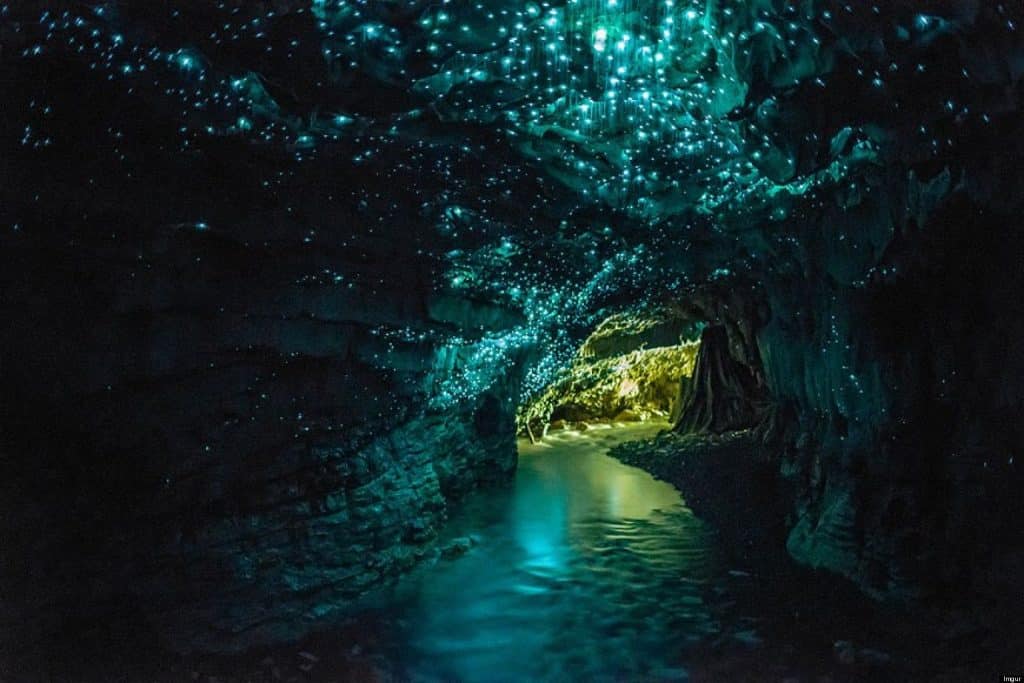Imagine a world filled with landscapes so surreal, they seem conjured from a dream. This post explores some of Earth’s most astonishing places, each unique in its beauty and mystique. These natural wonders, ranging from vast salt flats to vibrant, rainbow-colored mountains, defy conventional expectations. While some are well-known, others remain hidden gems, offering a glimpse into the planet’s diverse and extraordinary geography. The criteria for selection hinge on uniqueness, visual splendor, and their relatively lesser-known status, ensuring a fresh perspective on the world’s natural marvels.
Contents
Salar de Uyuni, Bolivia
In the heart of South America lies Salar de Uyuni, the world’s largest salt flat, spanning over 10,000 square kilometers. This ethereal landscape, created by prehistoric lakes that evaporated long ago, transforms into a giant mirror during the rainy season, reflecting the sky in a way that blurs the horizon. The salt crust, rich in lithium, creates a surreal, otherworldly terrain that captivates photographers and travelers alike. Visiting during the dry season offers a different perspective, with hexagonal salt patterns stretching as far as the eye can see.
Beyond the visual spectacle, Salar de Uyuni is a gateway to the rich cultural heritage of Bolivia. The nearby towns, such as Uyuni and Tupiza, offer insights into the local way of life, with vibrant markets and traditional cuisine. Wildlife enthusiasts can explore the surrounding Andean landscape, home to unique species like the Andean fox and pink flamingos. Additionally, the region’s history is etched in abandoned train cemeteries and ancient fortresses, making it a destination that combines natural beauty with cultural richness.
Antelope Canyon, USA
Tucked away in the American Southwest, Antelope Canyon offers a stunning display of nature’s artistry. Carved by water and wind over millions of years, this slot canyon is renowned for its wave-like structure and the light beams that shine down into the openings of the canyon, creating a mesmerizing play of light and shadow. The narrow, undulating passageways, with their smooth, flowing lines and warm hues, provide an unparalleled photographic opportunity, especially during midday when the sunlight is at its peak.
To fully experience Antelope Canyon’s magic, visitors are encouraged to take guided tours, which are mandatory due to the canyon’s protected status. These tours, led by knowledgeable guides, offer insights into the canyon’s geological history and the cultural significance it holds for the Navajo people. Close to Antelope Canyon are other attractions like Lake Powell and Horseshoe Bend, making it an ideal stop for travelers exploring the scenic beauty of the American Southwest. The best times to visit are during spring and autumn, when the weather is mild and the sunlight optimal for photography.
The Rainbow Mountains of Zhangye Danxia, China
In China’s Gansu Province, the Rainbow Mountains of Zhangye Danxia stand as a testament to the breathtaking beauty of natural geological processes. These mountains are famous for their vivid colors, a result of mineral deposits and red sandstone eroding over 24 million years. The layers of different colored sandstone and minerals were pressed together over time and then buckled up by tectonic plates, creating the wavy, rolling landscape that draws visitors from around the globe.
For the best viewing experience, several designated platforms offer panoramic views of these multicolored formations, particularly striking at sunrise or sunset when the colors appear the most vibrant. The geological park that houses these mountains provides walkways and trails, allowing for up-close exploration. While summer and autumn offer clear views, each season brings its own charm to the Rainbow Mountains, making them a year-round destination for nature lovers and photographers seeking to capture the splendor of one of Earth’s most colorful landscapes.
Lake Hillier, Australia
Off the coast of Western Australia, Lake Hillier astonishes visitors with its vibrant pink hue, a stark contrast to the deep blue of the surrounding ocean. This bubblegum-colored lake, located on Middle Island, the largest of the Recherche Archipelago, has baffled scientists for years. The pink color is due to the presence of Dunaliella salina microalgae, which thrive in the lake’s high-salt content. This unique phenomenon is best viewed from above, as scenic flights offer the most spectacular views of the lake in its entirety.
Lake Hillier is not only a visual marvel but also a symbol of nature’s mysteries. Efforts to protect the delicate ecosystem around the lake are in place, restricting direct access to ensure its preservation. The nearby town of Esperance serves as a base for visitors, offering a glimpse into Australia’s rugged southern coastline. In addition to Lake Hillier, the region is home to pristine beaches and a rich biodiversity, including rare bird species and wildflowers, especially in spring.
Socotra Island, Yemen
Socotra Island, often described as the most alien-looking place on Earth, is an archipelago in the Arabian Sea. Its isolation from the mainland has resulted in a unique and bizarre landscape, characterized by its dragon’s blood trees with umbrella-shaped canopies and the desert rose plants that resemble elephants’ legs. This UNESCO World Heritage Site boasts a third of its plant life found nowhere else on the planet, making it a hotspot for biodiversity.
The cultural heritage of Socotra is as intriguing as its natural wonders. The island’s small population has maintained a distinct culture with its own language and customs. Travel to Socotra requires careful planning due to its remote location and limited accessibility. The island’s untouched beauty, combined with its rich biodiversity, underscores the importance of conservation efforts to protect this unique ecosystem from the growing pressures of tourism and climate change.
The Door to Hell, Turkmenistan
In the heart of the Karakum Desert in Turkmenistan lies a fiery spectacle known as the Door to Hell. This massive, burning natural gas crater, officially known as the Darvaza gas crater, was created in 1971 when a Soviet drilling rig accidentally punctured a massive underground natural gas cavern, causing the ground to collapse and the gas to escape. To prevent the spread of methane gas, it was set alight, and it has been burning continuously ever since, illuminating the night sky with its eerie glow.
The sight of the Door to Hell is both intimidating and mesmerizing, with flames and boiling mud inside a crater over 60 meters wide and 20 meters deep. Visitors to the site are advised to exercise caution, as the heat and unstable ground near the crater pose risks. Despite the environmental concerns it raises, this accidental landmark offers a unique and surreal experience, especially captivating at night when its fiery glow is most visible.
Waitomo Glowworm Caves, New Zealand
In the heart of New Zealand’s North Island, the Waitomo Glowworm Caves offer an otherworldly experience. The main attraction of these caves is the Arachnocampa luminosa, a species of glowworm endemic to New Zealand. These tiny creatures emit a luminescent light, creating a starry effect on the cave ceilings. Visitors can explore these ancient caves through guided boat tours, silently gliding under the mesmerizing glowworm-lit canopy.
The history of the caves is as fascinating as their natural beauty. Formed over 30 million years ago, these limestone caverns have been shaped by water and time, creating impressive stalactites and stalagmites. A visit to the Waitomo Glowworm Caves can be combined with other attractions in the region, like the rolling hills of the Waikato region or the nearby Hobbiton Movie Set, making it a must-see destination for those exploring New Zealand’s North Island.
The Bottom Line
These extraordinary locations offer more than just visual splendor; they provide a window into the diverse and magnificent natural world. They remind visitors of the planet’s fragility and the need for conservation and responsible tourism. Each site, with its unique story, geological history, or ecological significance, contributes to a deeper appreciation of Earth’s wonders. The journey to these places is not just about witnessing their beauty but also understanding and respecting the delicate balance of nature that makes such wonders possible.
